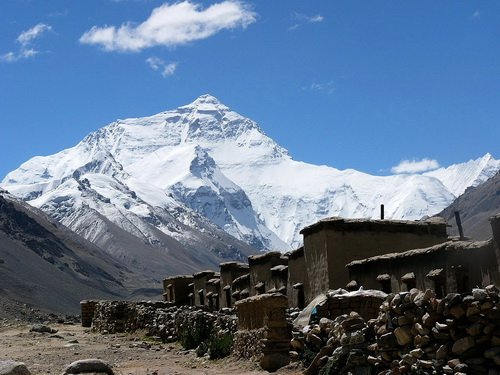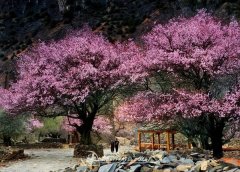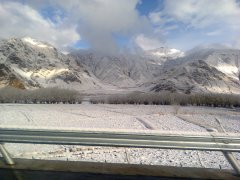
Mt. Everest—Easy to see, hard to climb

Mt.Everest
Mt. Everest ( also named Mt. Qomolangma) is the highest peak in the world. With approvals from the people's government of the Tibet Autonomous Region on November 3, 1988 and from the State Council in November 1993, the state-level Qomolangma Nature Reserve was established.
Many mountaineers’ lifetime dream is climbing the Mt. Qomolangma, however, it’s too hard for most of them. Here are some details about how difficult to climb Mt. Everest.
Level of difficulty: ****
Location GPS: 27°59′17″ E 86°55′31″E
Local Names:
In Nepal: Sagarmatha
In Tibet: Qomolangma (means: mother goddess of the universe)
Thin air: At the top of Mt Qomolangma, the actual percentage of oxygen in the air is the same as that at sea level (about 20%). However, the atmospheric pressure at the summit of Qomolangma is 33% that of sea level. So if you had a shoe box full of air, there would be 66% less oxygen in the box at the summit of Qomolangma than at sea level. Each breath pulls in 33% of the oxygen as that at sea level.
The death zone: Above 26,000' there's about a third of the oxygen available at sea level. Even acclimated, the body begins to shut down, and if a person stays that high long enough, they will die. Most climbers use oxygen here for climbing and sleeping.
The first mountaineer reached the peak of the Mt.Qomolangma was Edmund Hillary, 34, from New Zealand and Tenzing Norgay, 39, from Nepal, via the southeastern ridge on May 29, 1953.
The Beijing Olympic flame reaches the peak of Mt. Qomolangma an altitude of 8,844.43 m. at 9:18 am, May 8, 2008, which is the first time that the Olympic flame ascends the peak of Qomolangma.
Routes climbed on Qomolangma:
1) Southeast ridge from the south col (original route), 1953
2) North ridge from the north col (Chinese route), 1960
3) West ridge by the Hornbein Couloir (American route),1963
4) Southwest Face, 1975
5) West ridge direct (Jugoslav Route), 1979
6) North face by the Hornbein couloir (Japanese route),1980
7) North face from the morth col (Messner route), 1980
8) South pillar (Polish route), 1980
9) Southwest face central pillar (Russian route), 1982
10) East face by the central pillar, 1983
11) North face by the great couloir, 1984
12) East face and southeast ridge, 1988
13) Northeast ridge, 1988 (incomplete to summit)

With exceptional passion and outstanding leadership, Mrs. Catherine has dedicated herself to Tibet inbound tourism and China tour for 15 years. As one of the handful females who see great potential of Chinese inbound tourism, Catherine has made great contribution to promoting Tibet tourism and enhancing the employment of Tibetans and prosperity of local Tibetan community.
Over the years, she travelled overseas with Tibet Tourism Bureau many times to promote Tibet tourism. Currently, Catherine works as the marketing director of Tibet Vista, an opinion leader behind the whole team of Tibet Vista.
Related Articles & Posts

Latest Tibet Travel News

Tibet Vista: A Social Responsible Tour Organizer
Aug 14,2023

Tibetan Monks Debate in Drepung Monastery
Jun 10,2023

Tips for Traveling to Tibet in Spring
Feb 17,2022

Snow Will Hit Qinghai-Tibet Plateau
Feb 17,2022


.jpg)




0 Comment ON "Mt. Everest—Easy to see, hard to climb"